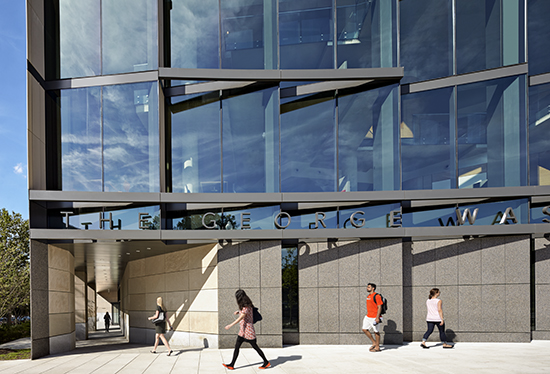We recognize that our focus on energy-hungry building types brings added responsibility. We understand environmental stewardship as a natural outgrowth of our humanistic design approach. Early projects employed passive technologies, such as sunscreens at Sherman Fairchild and natural ventilation at the Aga Khan University. What made these projects so formative for our practice was that they treated sustainability as a fundamental determinant of the overall design. At the Aga Khan University, for instance, the natural ventilation scheme not only provided building occupants with operable windows, but induced airflow across courtyard fountains to trigger evaporative cooling. This way of thinking holistically about sustainable design laid the foundation for the integrated practice that is PAYETTE today.

In 2014 we celebrated a number of high performing, energy efficient buildings and put our commitment to sustainable design front and center. We published our final report for the AIA Upjohn Research Grant regarding our research project, Thermal Performances of Facades and Environmental Awareness Week allowed us to turn inward and look at our internal materials consumption from paper to coffee cups! We also celebrated the 17 employees who earned LEED credentials and newly opened buildings with some exciting energy efficient strategies embedded in the design. Read about these topics and more in this list of the top five sustainability themed posts of 2014:
Thermal Performances of Façades: Final Report
Miep Keller, Charlie Klee, Andrea Love
This investigation seeks to quantify the effects of thermal bridging in commercial facades and then propose alternative solutions to improve performance. Utilizing infrared images taken from targeted assemblies at 15 recently completed buildings; we have determined the actual performance and R-values of a range of façade types and conditions.
Environmental Awareness Week
Alejandra Menchaca, Gerhard van der Linde
It turns out that contrary to popular belief, most paper cups are not recyclable. Single use paper cups have an inside coating of polyethylene plastic, which is nor biodegradable nor recyclable. As a matter of fact, while they are accepted in the recycling stream, they are discarded in the paper-processing site. If this weren’t enough, paper cups are regulated to contain no more than 10% recycled paper to maintain their structural properties, increasing the demand of trees to make them.
Energy Efficiency and the Thermal Corridor
The temperature within the thermal corridor can fluctuate to a greater degree than the inboard occupied spaces, allowing it to function as a buffer that reduces the energy use needed for heating and cooling. The transient space also protects these inboard spaces from solar heat gain and harsh glare, while simultaneously allowing daylight deeper into the building. Here, we examine how this feature functions within three of our recently completed, high-performing buildings.
George Washington Univ. Milken Institute Earns LEED Platinum
The project features a number of key sustainability components, including a green roof, native plantings, low-flow plumbing fixtures, lighting controls, C02 monitoring and local, rapidly renewable and recycled content materials, such as bamboo wall paneling. The building’s HVAC systems consist of both active chilled beam and mass air displacement technologies.
Energy Savings: Biosciences Research Laboratory
The BRB represents a “minimum energy” approach that has been rarely applied in US-based laboratories with the same rigor, due to perceptions of comfort and safety in a research environment regarding natural ventilation for offices zones, writing carrels and public spaces. This model provides an excellent energy paradigm and superior working environment with a radically lower energy profile than any other US-based laboratory of comparable programmatic intensity.

